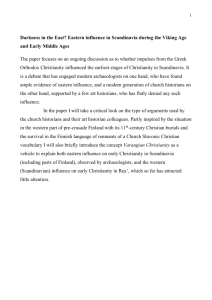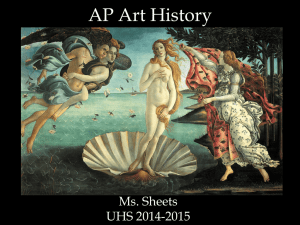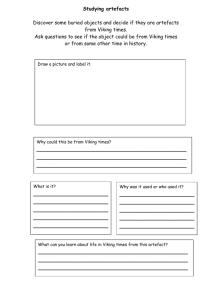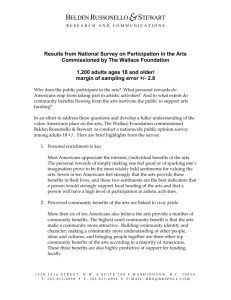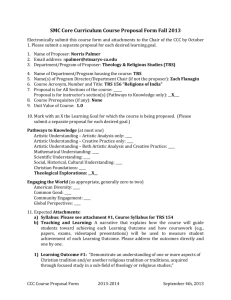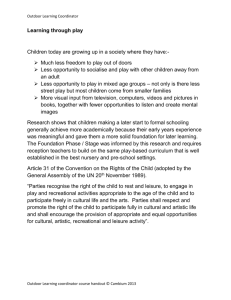File
advertisement
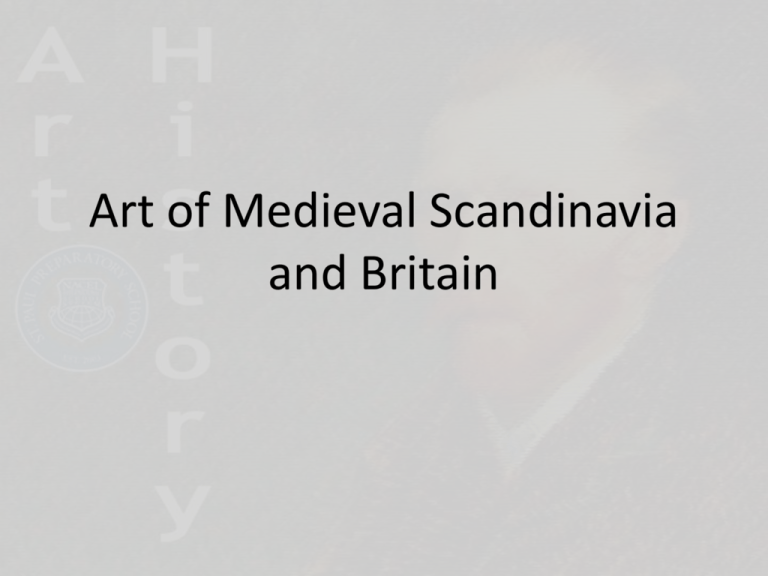
Art of Medieval Scandinavia and Britain Introduction • Artistic Era between the fall of Rome and the beginning of the Renaissance – Including Romanesque and Gothic Movements – Large regional differences • Commonality on religiously focused Building Artistic Traditions • Mediums – Sculptures – Illuminated Manuscripts – Architecture • Palaces • Cathedral – Icons • Religious artifacts Scandinavian • Most of what we know about Vikings comes from artifacts left behind – Sagas not recorded until 13th Century – Rich trading culture • Connected to vast wealth of Islamic world • Ceremonially and Religiously based mostly – Religiously linked to Nordic gods then Christianity Viking Longboats • Used to conduct raids and trading missions along coastal regions and rivers across Europe • Used in elaborate burial process of nobility – Archeological treasure troves Burial Ship, Found near Osenberg, Norway, 9th Century Details from Osenberg Longboat Viking Runestones • Used as a way to tell stories of great accomplishments or recount sagas from Nordic traditions Memorial Stone, Larbro Saint Hammers, Gotland, Sweden, 8th Century Christianity in Scandinavia • Introduction of Christianity around 995 led to change in culture and art of Scandinavia Borgund Stave Church, c. 1150 British Isles • Originally a Roman land so heavily influenced by Christianity – Native Celtic influence of artistic style – Anglo-Saxon invasion in 5th Century – Viking invasion in late 8th Century South Cross, Ahenny, Ireland, 8th Century Purse Cover, from the Sutton Hoo Burial Ship, Suffolk, England, c. 615630 Blending of Cultures • Increased connection led to hybrid artistic styles incorporating different artistic traditions with similar themes “Page with Lion,” Gospel Book of Durrow, Possibly originated in Iona, Scotland, c. 675
